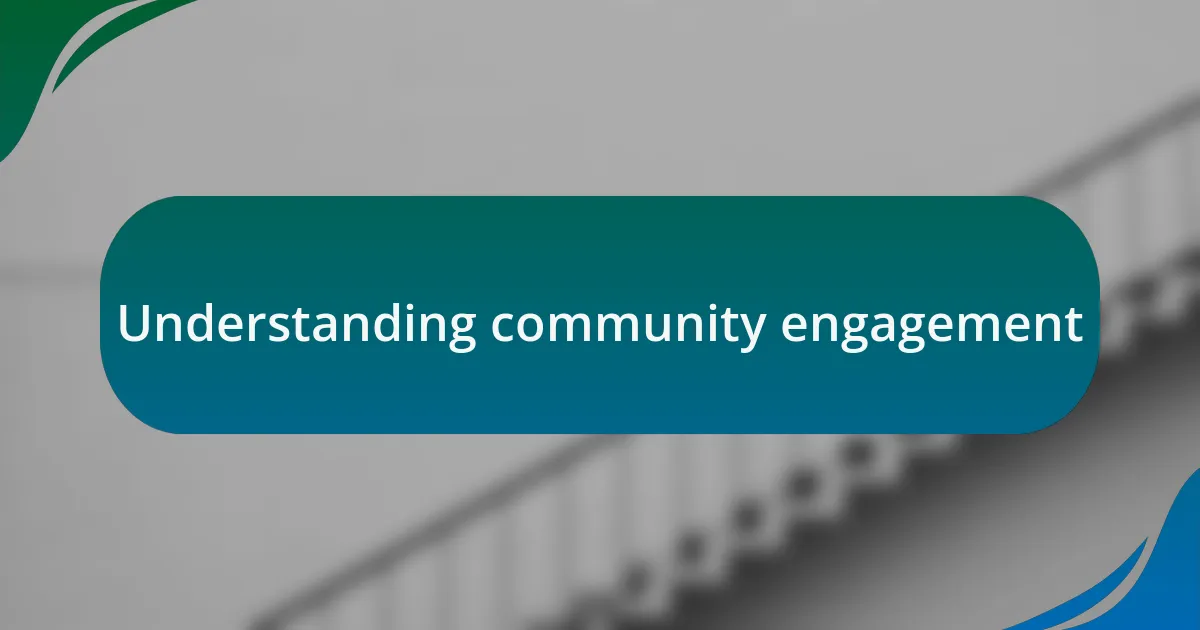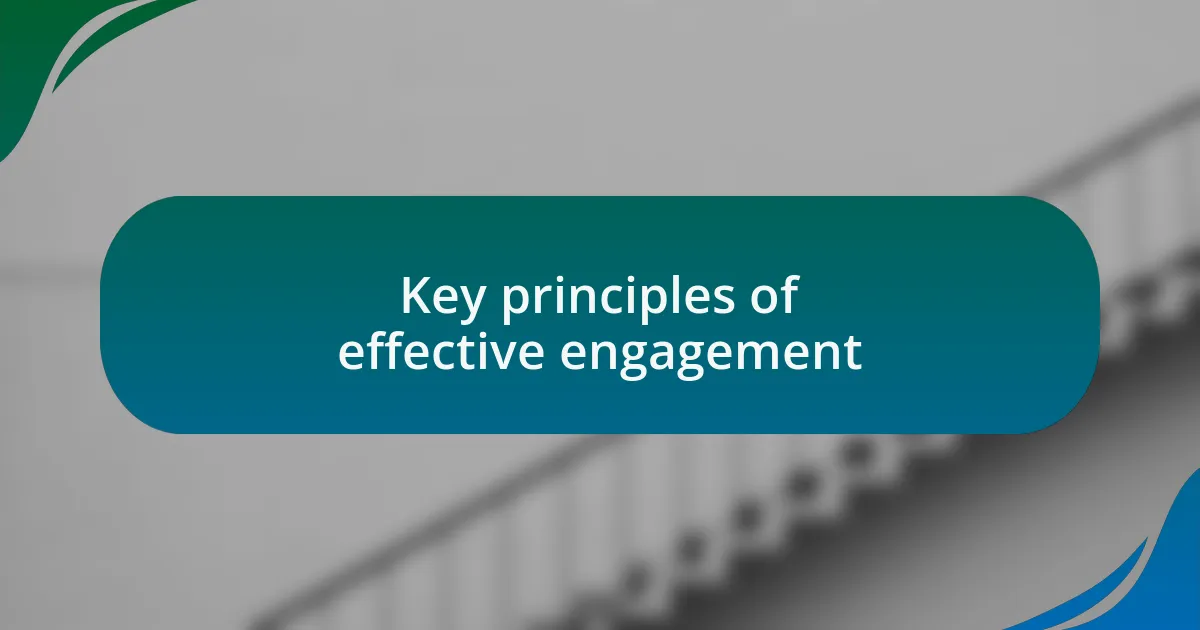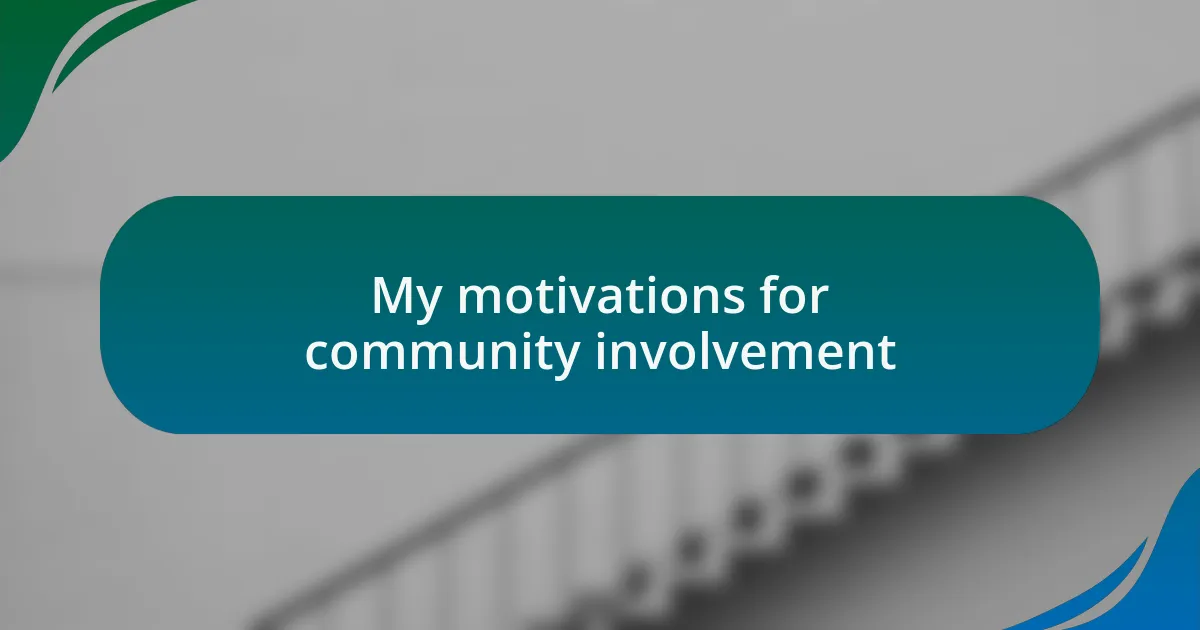Key takeaways:
- Community engagement involves building relationships and listening to diverse voices to shape urban spaces.
- Effective engagement relies on clear communication, trust, transparency, and celebrating successes to strengthen community ties.
- Personal motivations for community involvement include creating connected spaces, giving back, and the thrill of collaboration, leading to innovative solutions.

Understanding community engagement
Community engagement is fundamentally about building relationships. I remember a neighborhood meeting where residents voiced their frustrations about unsafe streets. Hearing their stories made me realize that these discussions aren’t just about buildings; they’re about the people who inhabit our urban spaces.
Reflecting on my experiences, I often ponder: how can we ensure that every voice gets heard? Engaging communities means actively listening and ensuring that diverse perspectives shape the urban landscape. One time, after a workshop, a participant approached me with a story about their childhood park being neglected. Their passion resonated deeply, as it reminded me that every structure holds memories and emotions.
Through community engagement, we unite different backgrounds and ideas, fostering a sense of belonging. I truly believe that when people feel connected to their environment, they take pride in it. Have you ever participated in a local initiative? If so, those interactions can spark a transformation that goes beyond physical spaces, enriching the entire community experience.

Key principles of effective engagement
Effective engagement hinges on clear communication. I recall a project where we used simple visuals and diagrams to explain our goals to the community. The excitement was palpable; people were eager to grasp the vision, which made them more invested in the process. It was a reminder of how essential it is to speak the community’s language and to demystify complex concepts.
Another key principle is fostering trust and transparency. I once hosted a Q&A session after a design presentation, and the candid discussions revealed underlying concerns about gentrification. By addressing these fears openly, we were able to reassure residents and build a collaborative atmosphere. Trust is not built overnight, but each honest interaction lays a strong foundation.
Lastly, it’s critical to celebrate successes, no matter how small. During a dedication event for a renovated park, I watched as families gathered to enjoy the space. Their joy highlighted the impact of our efforts, reinforcing the idea that engagement goes beyond planning; it’s about creating lasting memories. How often do we pause to appreciate the outcomes of our labor? Celebrating milestones not only energizes participants but also strengthens community ties.

My motivations for community involvement
My motivations for community involvement stem from a deep-seated desire to create spaces where people feel connected and valued. I remember walking through a neighborhood park one afternoon and seeing children play, elderly neighbors chatting, and families sharing picnics. In that moment, I realized how crucial these communal spaces are for fostering relationships and a sense of belonging. It made me wonder: how can we design places that not only serve a function but also bring people together?
Moreover, my drive comes from an innate need to give back. Growing up, I relied on the contributions of others in my community, from mentors to local businesses that supported our school events. Participating in community projects feels like a way of paying it forward. Have you ever felt that rush when you know you’ve made someone’s day just a little brighter? That’s the kind of satisfaction I seek in my engagements, knowing that my efforts lead to real improvements in people’s lives.
Lastly, there’s an undeniable thrill in collaboration. Working alongside diverse groups—whether with architects, city planners, or community advocates—offers a unique blend of ideas and perspectives that can lead to innovative solutions. I recall a brainstorming session about urban green spaces where we brought in residents’ ideas alongside professional insights. The energy in the room was contagious. Isn’t it remarkable how collective creativity can transform a vision into reality? Engaging with the community not only shapes our surroundings but also enriches my own understanding of the world.